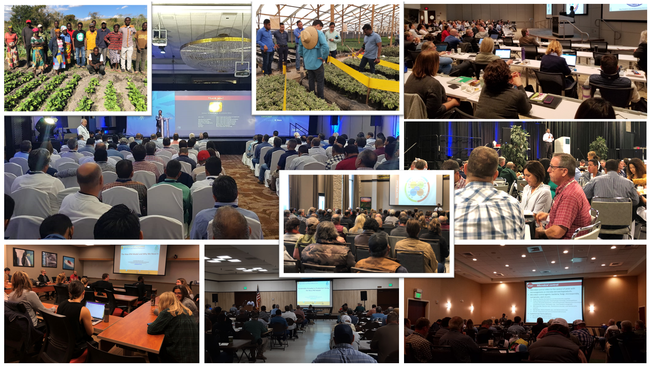UC ANR Cooperative Extension Advisor Surendra Dara's new IPM model is considered a practical and sustainable approach by educators and practitioners around the world, with an estimated benefit of $33.5 million from improved returns or savings.
The Issue
Integrated pest management (IPM) is a concept of pest management in an ecologically sustainable manner. Although IPM implementation has been promoted for decades and many farms apply IPM practices to some extent there are certain deficiencies in the understanding of IPM and its components and finding non-chemical management options or exploiting cultural practices to improve crop health and yields. The traditional IPM model faces certain challenges because of its limitations for practical applications. There is a need to improve the understanding of growers, pest control advisors, and crop advisors in developing comprehensive crop care strategies using IPM principles, and then there is also a need to revise the traditional IPM model to fit the modern production trends and consumer preferences. The ultimate goal is to improve IPM knowledge and implementation locally, regionally, nationally, and internationally.
How UC Delivers
UC ANR Cooperative Extension Advisor Surendra Dara has been conducting extensive research in providing multiple IPM options such as chemical, botanical, and microbial pesticides for pest and disease management. He also conducts research with biologicals exploring their potential in promoting crop growth and health and their direct or indirect contribution to pest and disease management. Dara recently redefined the IPM paradigm and developed a new model that is economically viable, socially acceptable, and environmentally sustainable. In addition to extending his research information locally and internationally, he has been speaking at various scientific conferences and extension meetings sharing the new IPM model. He has also provided IPM trainings to vegetable farmers in Mozambique and ornamental farmers in Guatemala in 2019, in addition to similar trainings in other countries such as Haiti and Myanmar. Through these efforts, Dara extended the IPM information to professors, researchers, extension professionals, growers, pest control advisors, crop advisors, and others and continues to do IPM education within and outside the United States.
The Impact
An anonymous online survey conducted during one month between early December 2019 and early January 2020 received responses from across California, Hawaii, and several states on the east coast of the US as well as from international respondents representing Argentina, Brazil, Canada, Chile, China, Europe, Indonesia, Kenya, Nigeria, Pakistan, Turkey, Uganda, and other African, Asian, and Central American countries. Out of the 115 responses, 95.7% indicated that they found useful information from Dara's outreach and that they have applied or would apply the information on their farms. Dara's outreach information has been or expected to be applied on nearly 955,000 acres with a $33.5 million improvement in farm income or savings. Another study has shown that the value of UC IPM resources to state-licensed pest control advisors is estimated to by $34 million annually. Survey respondents also indicated that they have further shared the information developed by Dara to over 142,000 of their colleagues, students, clients, or subscribers. Survey respondents included growers, pest control or crop advisors, private researchers, agricultural industry partners, and university faculty or researchers. The new IPM model Dara developed was published in the Journal of Integrated Pest Management in late April 2019 and has been read or downloaded more than 9,200 times so far. This model improves the efficiency of pest management, optimizes the associated costs, and increases the farm profitability. As this model continues to be applied in many farming systems, it increases agriculture efficiency and profitability. In this way UC ANR contributes to the public value of promoting economic prosperity in California.
